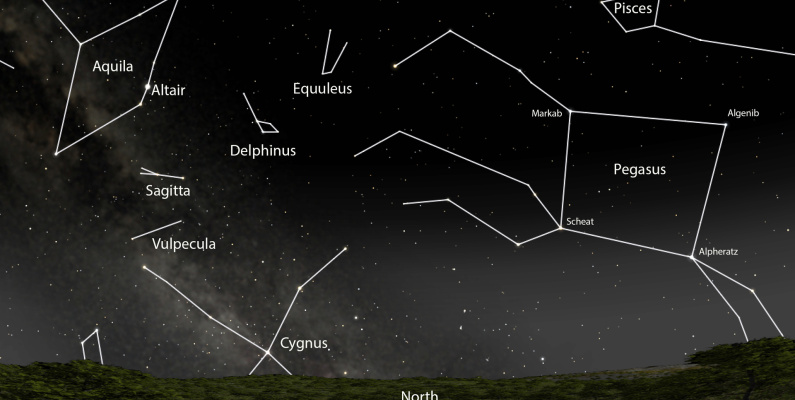
The moon reaches first quarter next Sunday (9 October) at 5.33pm, so moonlight won’t be a huge distraction for Otago stargazers this week. This gives us an excellent opportunity to explore and learn about some fascinating constellations visible in the northern sky after sunset this time of year.
Altair, in Aquila (the Eagle) is the twelfth brightest star in the sky. It will be the first object you see if you look north once the sky is dark. At a distance of only 16 light years, Altair is one of the closest stars visible to the naked eye, and as our chart shows, will be roughly 30° above the horizon at 10.30pm.
Altair can be used as a jumping-off point to help locate some quite small, but very distinct constellations. For example, Sagitta (the Arrow) is directly below Altair. One of the smallest constellations in the sky by area (only Crux and Equuleus are smaller), the four brightest stars in Sagitta stand out in a rather lovely part of the Milky Way, which is well worth scanning with binoculars. According to legend, Sagitta was regarded as the weapon used by Hercules to kill the eagle (Aquila) of Jove that made itself a celestial pest by constantly nibbling Prometheus' liver.
Fairly close to Sagitta is Delphinus (the Dolphin) whose brightest stars outline another small but equally well-defined constellation, which certainly resembles its namesake.
In contrast to Sagitta and Delphinus, Pegasus is huge – the seventh biggest constellation. As our chart shows, the ‘Great square of Pegasus’, delineated by the bright stars Markab, Scheat, Algenib and Alpheratz, dominates the north-eastern sky. In fact Alpheratz isn’t in the constellation Pegasus; it’s actually the brightest star in Andromeda!
In Greek mythology, Pegasus represented a winged horse with magical powers. One particularly appealing story about this constellation is that the horse’s hooves dug out a spring which blessed those who drank its water with the ability to write poetry. I hope viewing Pegasus inspires any poets reading this column to pick up their quills and get writing!
